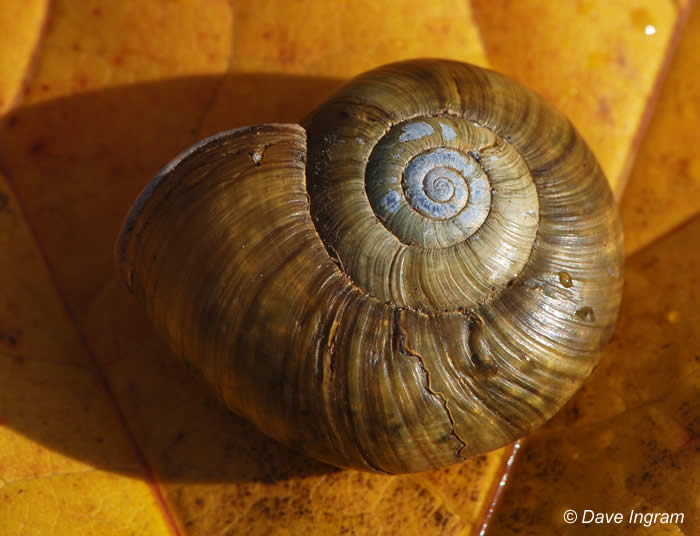We’ve been keeping an eye out for some of the bigger snails during our forest walks this week. They’re much easier to identify than some of the smaller ones that we’ve discovered underneath paving stones and wood. This week we found the shell of a Robust Lancetooth (Haplotrema vancouverense). The robust lancetooth is a fairly common large snail in deciduous and mixed-wood forests along the coasts of British Columbia. These snails look for shelter underneath rocks, moss, wood and leaf litter on the forest floor. The snail is omnivorous and eats earthworms, slugs, and snails (including their own species).
Identifying Features
The snail is relatively easy to identify. According to Land Snails of British Columbia (Robert Forsyth), the shell of the robust lancetooth is between 22 and 32 mm in width. It is yellowish or olive green in colour. The body of the snail is creamy white with the head and tentacles darker. While we’ve found a few shells of this species, we’re still searching for a live animal.
The apertural lip is one diagnostic feature to look for when identifying the robust lancetooth. The Beaded Lancetooth (Ancotrema hybridum) looks superficially similar to the robust lancetooth. In contrast, it has a beaded shell and an apertural lip that is thicker and arched forward and downward.
Snail enthusiasts are recommended to visit Forsyth’s website Mollus.ca for detailed descriptions and photographs of snails in British Columbia.



